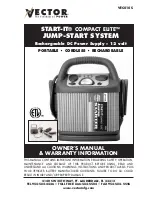
•
Operating temperature: -67 °F to +131 °F (-55 °C to +55 °C)
•
Frequency – 118.0 to 136.0 MHz VHF. Digital control electronics allow operating frequency to be easily reprogrammed by
the user. This eliminates the need — required by older analog units — to return the L-854 to the factory for operating
frequency changes.
•
Antenna – whip (standard) or remote
•
Built-in speaker with volume control
•
Optional Remote Maintenance Module (RMM) available to interface to FAA equipment
•
For Canadian applications, the L-854 is configurable as a Type J or Type K ARCAL unit via DIP switch selection
Application
The primary function of the L-854 Radio Controller is to allow maximum utilization of airport runway lighting systems during
times when the airport is unattended.
Runway or approach lighting systems may be activated and intensity controlled remotely by using the L-854 Radio Controller.
This is accomplished by the simple process of keying the microphone button of the regular VHF communication transmitter in
the approaching aircraft. No special airborne equipment or adapters are required. Two independent sets of output relays can
be programmed for either individual or incremental operation.
The lights are activated remotely from the air and remain on for a period of 15 minutes and turn off automatically thereafter.
Additional timer settings of 1, 30, 45 and 60 minutes are available. Selectable re-command enable/disable prevents setting
outputs to a different state until the L-854 has timed out.
Selectable decoder enable/disable prevents multiple relay operation during the daytime when ATC normally controls the
lights.
Runway edge lighting, MALSR, or REILs are prime candidates for radio control operation.
In Canada, ARCAL systems are generally available in two forms. Type J allows connected systems to be activated at a single
intensity. Type K allows three selections of connected systems and are generally used to scale the light intensity selection on
connected high and medium intensity lights.
Operating Conditions
Temperature:
-67 °F to +131 °F (-55 °C to +55 °C)
Humidity:
0 to 100%
Altitude:
0 to 6,600 ft (2,000 m)
Electrical
The Receiver is a single-conversion super-heterodyne design operating at a nominal radio frequency within the VHF band 118
to 136 MHz. The sensitivity is adjustable from 1 to 30 microvolts as desired by the user, permitting a control range of 1 to 20
miles. The receiver may be programmed to operate on any frequency in the specified VHF range. The Unicom channel, 122.8
MHz, is a frequent choice. Decoding is accomplished by solid-state digital circuitry, which is designed to sense the presence
of three, five, or seven pulses within a five-second time period. The digital circuitry determines if any of these conditions exist
and affect proper output relay closures. The L-854 Radio Control Equipment complies with FCC Part 15 rules and regulations.
Input Power Requirements
Voltage
Maximum VA
12 VDC
11
1
48 VDC
13
120 VAC
15
2
240 VAC
18
2
Notes
96A0390, Rev. K, 2019/02/01
7
Copyright
©
ADB Safegate, All Rights Reserved
Summary of Contents for L-854
Page 1: ...L 854 Radio Control Equipment RCE Type I Style A User Manual 96A0390 Rev K 2019 02 01 ...
Page 2: ......
Page 6: ...L 854 Radio Control Equipment TABLE OF CONTENTS vi Copyright ADB Safegate All Rights Reserved ...
Page 18: ...L 854 Radio Control Equipment Options 12 Copyright ADB Safegate All Rights Reserved ...
Page 32: ...L 854 Radio Control Equipment Operation 26 Copyright ADB Safegate All Rights Reserved ...
Page 34: ...L 854 Radio Control Equipment Maintenance 28 Copyright ADB Safegate All Rights Reserved ...
Page 48: ......














































